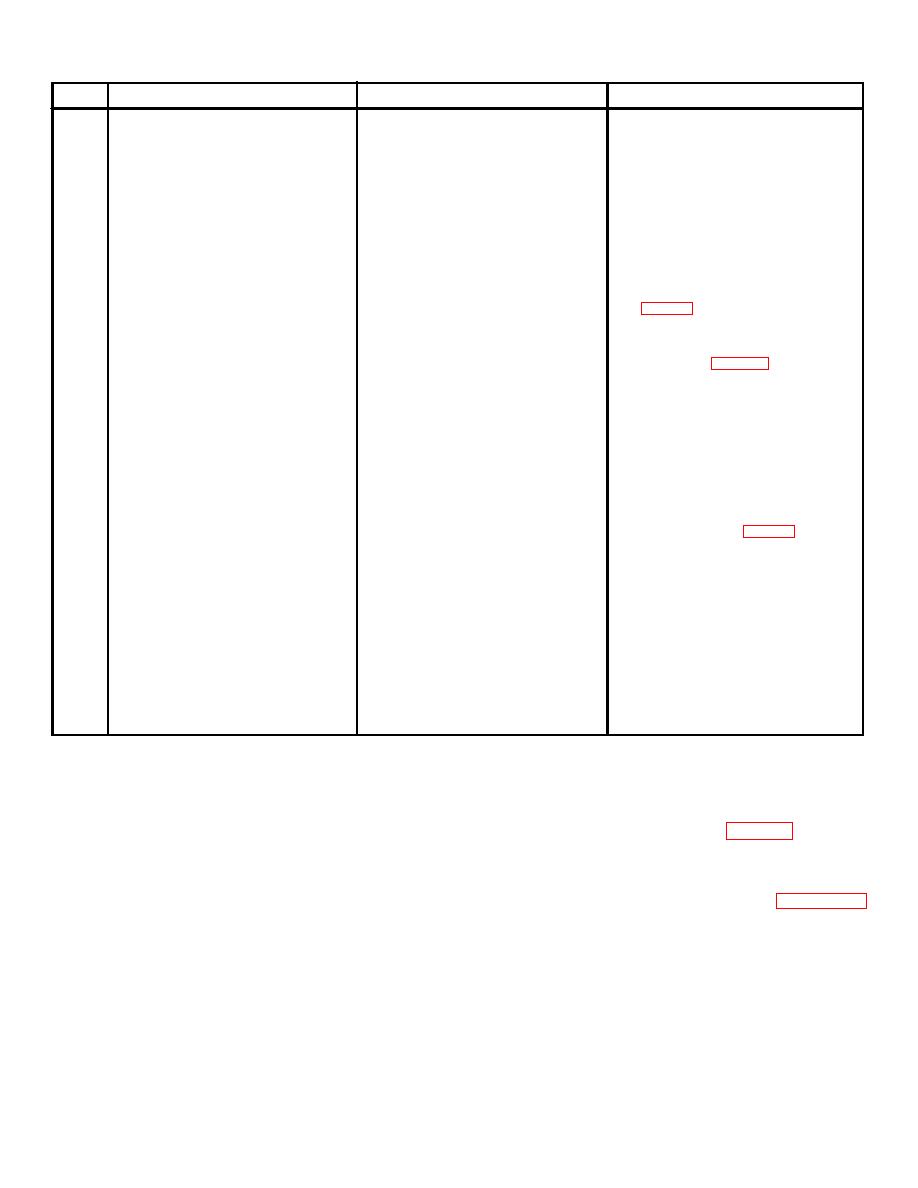 |
|||
|
|
|||
|
|
|||
| ||||||||||
|
|  TM 11-5820-509-35
Item
Indication
Probable trouble
Procedure
2
Transmitter does not key when
a.
Telegraph key or connecting
a.
Repair or replace J-45 telegraph
CW-FSK/VOICE switch is at
cord is defective.
key and/or connecting cord.
CW.FSK and telegraph key is
b.
Key circuit on main chassis
b.
Check continuity from P2-K to
operated.
defective.
P3-K, to J2-18, to FL2-10.
Check capacitors C21 and C25
for shorts to ground. Repair
defective circuit or replace
shorted capacitors.
c.
Key circuit in FL2 defective.
c.
Check continuity from FL2-10
to FL2-23 and from each ter-
minal to ground. Repair circuit
or replace C204, C217, or L204
d.
Key circuit in audio frequency
d.
Check oscillator output at
amplifier A1 defective.
A1J9. Check continuity from J2-
18 to A1L2-3. Repair AM-
3506/PRC-47 (para 3-13a ) or
replace defective module.
3
Transmitter does not key when
a.
OPR-TUNE switch S102
a.
Check continuity from S102
OPR-TUNE switch is in TUNE
defective.
(NO 2) to S102 (COM 2) with
position.
switch at TUNE. Replace S102
if circuit remains open (para 3-
9).
b.
Overtemperature cutout has
b.
Check continuity from S102
operated or is defective.
(NO 2) to ground. If open, K103
has operated. Permit K103 to
cool for 15 to 20 minutes and
then recheck. If circuit is still
open; replace K103 (para 3-9).
4
Oscillator control A7 loses control
a.
Automatic oscillator capture
a.
Repair C-4311/PRC-47 (para 3-
of hf oscillator.
circuit defective.
13f ) or replace defective module.
b.
Antilock relay circuit in main
b.
Place ground at J11-3 and
chassis defective.
observe that +1.0 volts dc
appears at J11-4 and J11-5. If
not, check J 11-1 for + 20 volts
dc: repair circuit as required.
Check continuity from J 11-4 to
K6-8 and from J11-5 to K6-4.
Repair if open. Check resistance
of R126 (normal 19.1K ohms)
and R127 (normal 1,210 ohms).
Replace K6 if contacts remain
open or repair resistor divider.
Section III. ISOLATING TROUBLE
sockets and transistor terminals of a questionable circuit
3-6. Trouble isolation Within a Module
or stage. Use the flexible extender cables provided as
a. When the cause of trouble has been localized to
part of Cable Assembly AN/PRA-4 (fig. 3-84) to extend
a stage or specific circuit within a module or
the suspected module from the main chassis to gain
subassembly through use of the troubleshooting charts,
access to the internal adjustments and test points.
the following procedures will isolate the malfunction to a
Refer to the voltage and resistance diagrams for the
defective component.
suspected module or subassembly shown in figures 3-68
WARNING
through 383. Module disassembly and reassembly
Avoid contact with the high-voltage
procedures are detailed in section V.
circuits of Signal Data Translator CV-
CAUTION
1377A/PRC-47 (A3), Power Supply
When making voltage readings on
PP-3518/PRC-47 (A5), and in the
partially disassembled modules, do
power amplifier compartment. These
not permit the individual card
voltages can cause personal injury
assemblies to
or death.
b. Make all voltage measurements at the tube
3-87
|
|
Privacy Statement - Press Release - Copyright Information. - Contact Us |